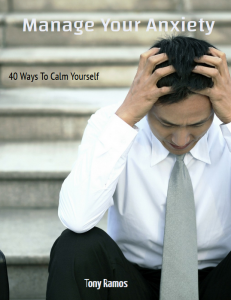
Teaching children mindfulness is a waste of time
A friend from Lewisham, south London, reports occasionally on her children’s state school, which has a reputation for being strife- and strike-prone. However, the children themselves – nursery and reception – are engaged in more calming activities. They are doing mindfulness. ‘My son loves it,’ she says. They sit down cross-legged at least once a week to take in the sounds around them (‘listen to the birds!’), concentrate on their breathing and focus on the present moment. My friend did ask the teachers whether it was possible to get five-year-olds to sit still for that long. ‘Yes,’ she was told. ‘In fact, some fall asleep.’
On the plus side, it helped deal with teacher burnout; on the downside, the participants were just bored
Another friend’s two children attended St James’s School, a private school in Kensington which teaches Sanskrit and where meditation is very much part of the school day; they did it for about ten years. ‘The school took it quite seriously,’ she says. ‘They did it in partnership with the School of Meditation in Holland Park. The experience wasn’t particularly positive or negative. When they were little, it got in the way of playtime. When they were sitting with their eyes shut at the start of each day, my daughter says they were generally thinking about lunch. She says she has now gone back to meditation, but using apps. That is better than anything she learned at school.’
Schools, then, aren’t immune from the mindfulness craze, which was very much in fashion about a decade ago. In 2019 the government helped sponsor a research project led by the Anna Freud Centre for Children and Families, in partnership with University College London, which works with children from 370 schools to see how various approaches work ‘to help them regulate their emotions’. Mindfulness is one, relaxation techniques another. As mindful.org observes: ‘The government’s initiative builds on over a decade of grassroots work to bring mindfulness to schoolchildren across the UK. Thanks to independent curriculum innovators and enthusiastic champions at the school and local authority level, over 5,000 trained classroom teachers deliver mindfulness training in thousands of schools across the UK.’
The results are already in from one study into the effects of mindfulness in schools, and the gist is: it’s not all it’s cracked up to be. The Myriad study, which was funded by The Wellcome Trust and conducted by researchers from Oxford, Cambridge, Exeter, King’s College London, UCL and Pennsylvania State University, was an eight-year programme that involved more than 28,000 children aged 11 to 14, 100 schools and 650 teachers.
Most popular
John Sturgis
Admit it, the French are better than us
The outcome was underwhelming. The young people participating in the studies reported mixed views of the training (some rating it highly and others negatively), while 80 per cent did not do the required practice homework. (That last bit was the least surprising aspect of the study.) On the plus side, it improved school culture and helped deal with teacher burnout (teachers led the sessions), though the effects washed out after a year. On the downside, quite a few of the participants were just bored. So, as regards the great issue of the day – teenage mental health problems – mindfulness isn’t quite the all-purpose fix its proponents hope.
Or, as Miranda Wolpert, director of mental health at Wellcome, said: ‘In science, it is just as important to find out what doesn’t work as what does. It can take real bravery to share such findings. This rigorous, large-scale study found that when mindfulness training was delivered at scale in schools, it did not have an impact on preventing risk of depression or promoting wellbeing in students aged 11 to 14 years.’ What all this suggests is that we’re investing a lot – emotionally, financially and in time – in something that cannot be transformative.
To state the crashingly obvious, if a school is badly run, with a culture where bullying goes unchecked, mindfulness sessions are not going to make bullied children less unhappy or the bullies less horrible. Indeed, in the quiet time for mindfulness, the mind of a bullied child is quite likely to turn to ways to evade his tormentors, not to focus on his breathing. Similarly, if teachers are overstretched and under-supported, mindfulness may help them focus on the present moment, but it doesn’t address the reasons they’re under pressure. Mindfulness is not a panacea, a way of evading unhappiness.
It’s known, for instance, that mental health problems are – surprise! – more prevalent in socially deprived areas than in prosperous ones; focusing on the present moment, however useful, isn’t going to make your area less deprived. Indeed, in Marxist terms, I’d say there’s something dodgy about this particular opium of the proletariat in diverting attention from injustice.
We’re investing a lot – emotionally, financially and in time – in something that cannot be transformative
But there is an alternative. The friend I mentioned previously observed that although mindfulness seems like a novelty, she’d done it herself without knowing it: ‘A nun at school used to get us to sit in a circle, in silence, breathing deeply, and then, once we were focused, we’d say a prayer.’ In other words, it was that familiar thing: religious meditation. Except critically, instead of focusing on ourselves, the minds and hearts are directed to God – outwards and upwards.

Unlock unlimited access, free for a month
then subscribe from as little as £1 a week after that
SUBSCRIBE
Indeed, pupils at the Jesuit school, Stonyhurst, do an element of the Ignatian Spiritual Exercises, the examen, midway through the day. It’s a silent reflection on God in the events and people of the day, and on their intentions for what is to come. St Ignatius recommended it at night, but in school, the headmaster John Browne told me, it helps pupils focus on what they can do better.
In other words, I’d say what schools need to help with mental health isn’t mindfulness. It’s a proper chaplain and prayers.





